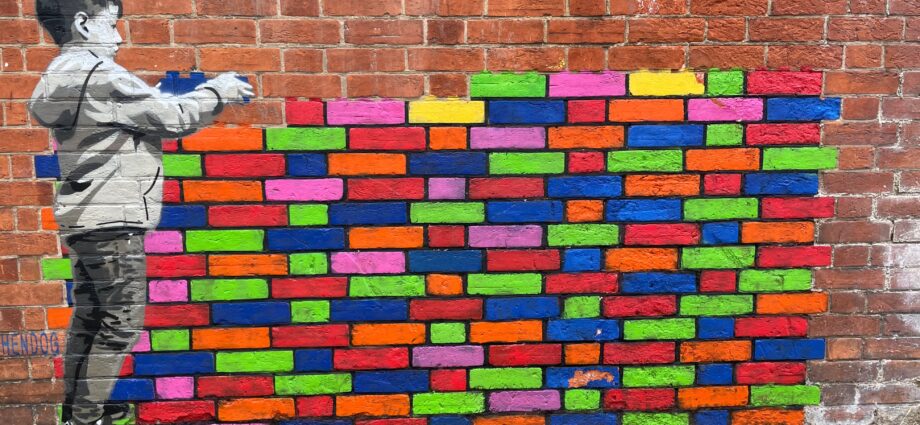A hoodie and a box of paint cans are permanent attributes of one of the world’s most famous artists, the elusive Banksy. The Bristol graffiti master, whose work is now selling for millions of pounds, has confirmed that he has been a little “hooligan” in the seaside resorts of the east coast of England. But some of his works have already been damaged or destroyed.
Recently, in several provincial towns, fresh graffiti appeared – for example, a rat drinking a cocktail on a sun lounger on the beach or a huge seagull hanging over a “box of chips” (in fact, a container with building materials). Rumors immediately spread that it was the creation of Banksy’s hands. Now he has confirmed it.
A clip was posted on Instagram clarifying the origin of the drawings. The video is just over three minutes long and is called A Great British Spraycation. It shows an anonymous artist driving around in a battered RV with a portable refrigerator full of paint cans.
Most likely, Banksy thus wanted to express solidarity with many Britons who, due to pandemic innovations, cannot go abroad and spend their summer holidays at home. The artist’s “vacation tour” took place in five cities in Suffolk and Norfolk. In total, he left 10 “traces” of his stay.
What the artist painted
A rat sunbathing in a sun lounger appeared on a concrete protective wall at North Lowestoft Beach. Last weekend, it was revealed that someone had smeared the drawing with white paint, much to the outrage of city officials. They hired restorers in the hope that they would restore the work.
The graffiti with the “grip” from the slot machine, which hangs over everyone who sits on a bench on the seaside in Gorleston, is also spoiled. A local artist decided to add six teddy bears and the inscription Banksy Collaboration Emo to the laconic work of his famous colleague. And then someone crossed out the nickname Emo and added Ego below. Then the Ego was crossed out and reapplied. Finally, one of the bears was “bled” from the nose.
And the drawing with children, who are thrown out of an inflatable boat due to the carelessness of a drinking adult, was removed at the initiative of the municipality of Great Yarmouth. The fact is that Banksy chose a place for her, not far from which three years ago a child died under similar circumstances. So the authorities decided to find a less traumatic location for the job.
By order of the board of Alton Broad, a suburb of Lowestoft, a piece of metal was removed from the composition “We are all in the same boat.” This section obstructed a drain, above which Banksy drew three boys playing seafarers. A piece of iron there could lead to flooding of the park during the rain. The authorities promised to return everything “as it was” when the weather was good.
Banksy also “handed” a glass of ice cream to a statue of Frederick Savage, who was mayor of King’s Lynn in the 19th century. Moreover, he provided the stone town governor, with a spicy pink tongue. Unfortunately, the municipality did not appreciate this edition of the ancient monument.
What works of the artist remained intact
• a dancing couple and a man playing the accordion at the bus stop in Great Yarmouth;
• graffiti on a miniature stable with the inscription “Get Big or Go Home”, signed by Banksy and with his “trademark” rat, in the same Great Yarmouth;
• a child with a crowbar and a sandcastle next to broken paving slabs in Lowestoft;
• a group of hermit crabs put on a shell and held up the “Luxury rentals only” sign.
These works contrast with Banksy’s work in recent years. He began to make overt political comments – he launched a campaign against the mistreatment of migrants, spoke out against Brexit and radical Islamism, and also criticized the priorities of the international art market.
In March of this year, an auction record was set for the Banksy’s works. His painting “The One Who Saves the World” – depicting a child playing with a nurse figure instead of the rejected Batman or Spider-Man – was sold for 16.7 million pounds. The money went to Southampton Hospital, which received the job as a gift during the first wave of the pandemic.

